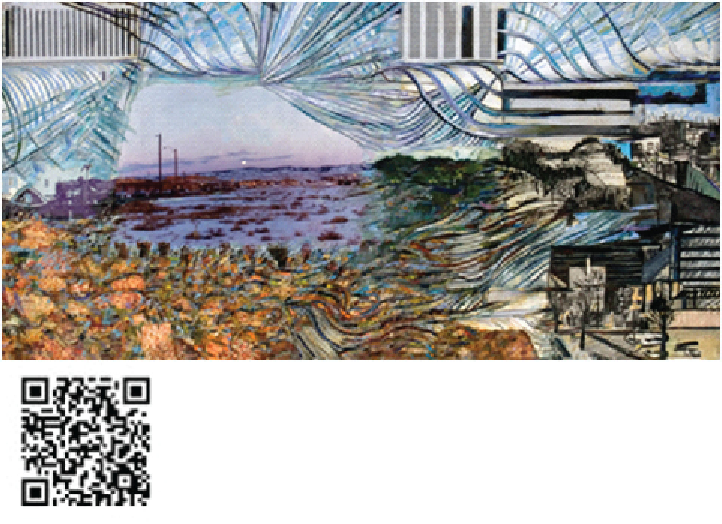Graphics Reference
In-Depth Information
Figure 1. Anna Ursyn, “Change of Matter” (© 1997, A. Ursyn. Used with permission)
Collaborative Biological Simulations
Figure 1, “Change of Matter” tells metaphori-
cally about transitions experienced by someone
entering a new community, as compared to the
phase transition from one state of matter to
another, such as transformation of a solid ice
to liquid water, and then to gaseous air. Phase
transitions may thus serve as subjects for study
as well as metaphors for human experience.
As we change various types of communities,
we change our perspective and routines. While
surviving snow and rain, ice and sunshine, liquid
and solid phases, we may utilize computer net-
works to alleviate the impact caused by changes
and differences perceived. In the same way as
we may use networked digital art as an exquisite
medium to convey the order and regularity of
material forms (physical matter) in landscape,
we may picture and share with this medium our
experiences in the new surroundings.
In neural network or neural computing, computer
architecture is modeled upon the human brain's
interconnected system of neurons. Through simu-
lation, neural networks imitate the brain's ability
to sort out patterns and extract the relationships
that underlie the data. Below are two examples
of current simulation projects resulting from col-
laboration in the fields of neuroscience, medicine,
and computing.
The Blue Brain Project EPFL (École Polytech-
nique Fédérale de Lausanne, http://bluebrain.epfl.
ch/) is focused on exploring the healthy brain and
understanding neurological diseases. Scientists
translate their observations into mathematics to
develop algorithms that allow reconstruct the brain
by building virtual brain in a supercomputer. The
Human Brain Project (http://www.humanbrain-

